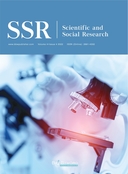Abstract
Investors’ demand for asset management products is rising; however, traditional asset allocation models are facing difficulties in playing a full role due to the restrictions on the investment scope and the limitation of the accuracy of fund manager’s subjective judgments. The application of traditional asset allocation model necessitates knowledge about the expected returns, future trends, or risk scopes of assets. This study holds that the quantitative method based on macroeconomic logic is one of the solutions. Beginning from the macro-cycle, this study analyzes the logical chain behind the application of the momentum effect and contrarian effect to stock index allocation and stock bond allocation, verifies their effectiveness, as well as explores relevant strategies using data from 2010 to 2021. Therefore, when the accuracy of subjective views cannot be guaranteed, it is a good idea to form a benchmark scheme with generalized quantitative methods based on financial market logic, and then make subjective adjustments.
References
Markowitz HM, 1952, Portfolio Selection. The Journal of Finance, 7(1): 77-91.
Black F, Litterman R, 1992, Global Portfolio Optimization. Financial Analysts Journal, 1992(9/10): 28-43.
Qian E, 2005, Risk Parity Portfolios: Efficient Portfolios Through True Diversification, Panagora Asset Management, Boston, MA. http://www.panagora.com/assets/PanAgora-Risk-Parity-Portfolios-Efficient-Portfolios-Through-True-Diversification.pdf
Dong D, 2019, An Analysis of the Allocation of Major Assets in China Based on the “Currency + Credit” Method. Financial Development, 2019(01): 20-40.
Jegadeesh N, Titman S, 1993, Returns to Buying Winners and Selling Losers: Implications for Stock Market Efficiency. The Journal of Finance, 48(1): 65-91.
De Bondt WFM, Thaler R, 1985, Does the Stock Market Overreact?. The Journal of Finance, 40(3): 793-805.
Wang Y, Zhao X, 2001, An Empirical Analysis of “Momentum Strategy” and “Reversal Strategy” in China’s Stock Market. Economic Research Journal, 2001(06): 56-61, 89.
Kang J, Liu MH, Ni SX, 2002, Contrarian and Momentum Strategies in the China Stock Market: 1993-2000. Pacific-Basin Finance Journal, 10(3): 243-265.
Fan L, 2020, Is There Momentum Effect in China’s A-Share Market? – Comparison Based on Several Momentum Strategies, Lanzhou University, Lanzhou, 002374.
Dai X, 2021, Research and Exploration on the Momentum Effect of China’s A-Share Market, Anhui University of Finance and Economics, Bengbu, 000366.
Zhou Y, 2019, Research and Exploration on the Momentum Effect of China’s A-Share Market, University of International Business and Economics, Beijing, 000076.
Chen Y, 2019, Momentum Effect and Inversion Effect of Conceptual Plate in China A-Share Market, Yunnan University, Kunming.
Yan C, 2019, A study on Momentum and Reversal Effect in Chinese Stock Market – Empirical Research Based on A Share, Central University of Finance and Economics, Beijing, 000017.
Moskowitz TJ, Ooi YH, Pedersen LH, 2012, Time Series Momentum. Journal of Financial Economics, 104(2): 228-250.
Shi HL, Zhou WX, 2017, Time Series Momentum and Contrarian Effects in the Chinese Stock Market. Physica A: Statistical Mechanics and Its Applications, 483: 309-318.
